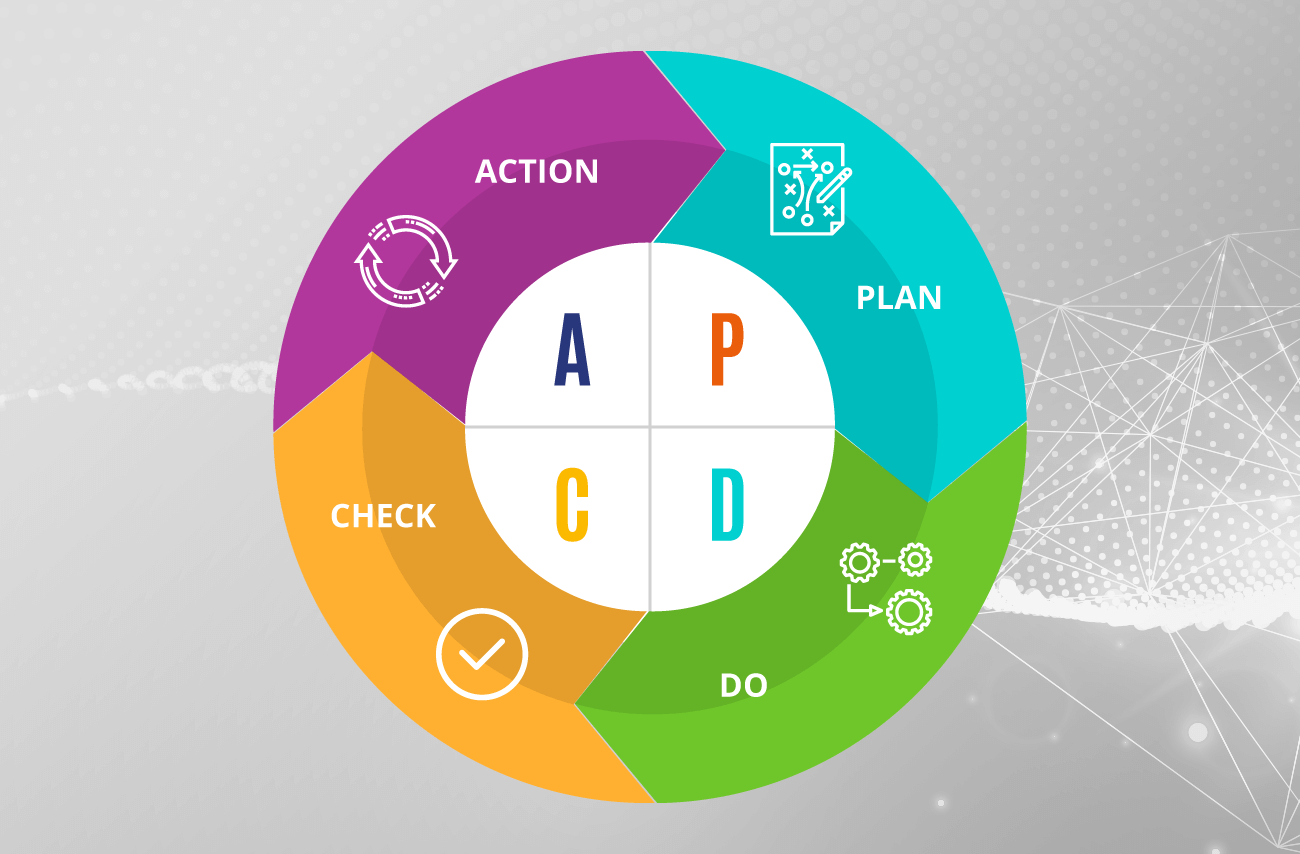The success of any method currently used by organizations to manage aspects such as quality (ISO 9000), environment (ISO 14000), occupational health and safety (OHSAS 18000), or food safety (ISO 22000), depends on everyone's commitment levels, especially senior management, and allows developing policies, setting objectives and processes, and taking the necessary actions to improve their performance.
In this context it is unavoidable to use the PDCA methodology promoted by Deming, as a way of looking at things that can help the company discover itself and guide changes that make it more efficient and competitive.
The PDCA Cycle is also known as "Circle of Deming", since it was Dr. Williams Edwards Deming one of the first who used this logical scheme in quality improvement and gave him a strong boost.
Based on a concept devised by Walter A. Shewhart, the PDCA Cycle constitutes a strategy of continuous quality improvement in four steps, it is also called a spiral of continuous improvement and is widely used by the various systems used in organizations to manage aspects such as quality (ISO 9000), environment (ISO 14000), occupational health and safety (OHSAS 18000), or food safety (ISO 22000).
The acronym PDCA stands for the words Plan, Do, Check, Act.
The PDCA model proposed by Deming (1986) is a strategy of continuous quality improvement in four steps. It is a process that consists of four phases:
PLAN:
The PDCA model proposed by Deming (1986) is a strategy of continuous quality improvement in four steps. It is a process that consists of four phases:
DO:
Implement the new processes. If possible, on a small scale.
CHECK:
After a planned period of time beforehand, re-collect control data and analyze them, comparing them with the initial objectives and specifications, to assess whether the expected improvement has occurred. The conclusions should be documented.
ACT:
Modify the processes according to the conclusions of the previous step to achieve the objectives with the initial specifications, if necessary. Apply new improvements, if errors were detected in the previous step. Document the process.
The interpretation of this cycle is very simple: when you want to get something, the first thing to do is plan how to get it, then proceed to perform the planned actions (do), then check how it has been done (check) and finally the relevant changes are implemented so as not to make the same mistakes again (act).
Again the cycle begins planning its execution but introducing the improvements coming from the previous experience.

